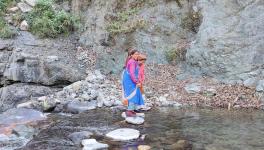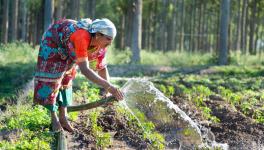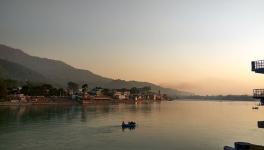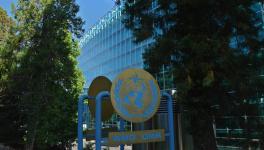Is Wastewater an Answer for Adapting to Climate Change?
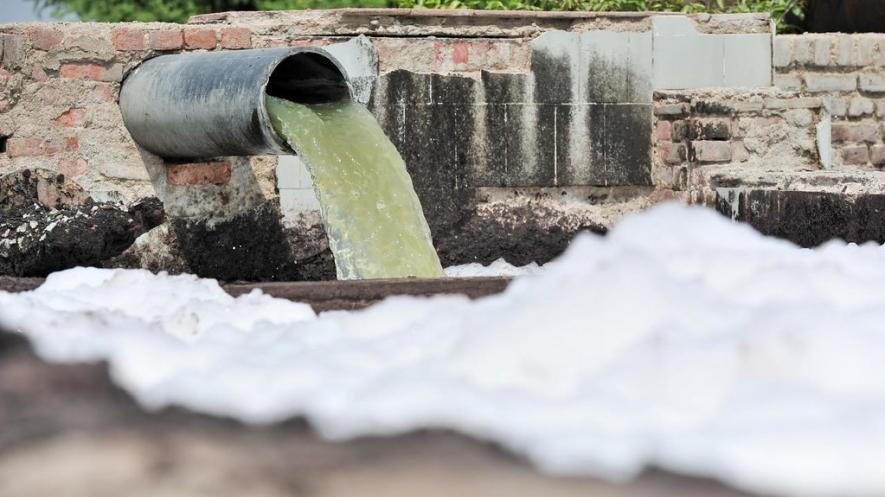
Representational Image. Image Courtesy: Flickr
Population growth and climate change are stretching America’s water supplies to the limit, and tapping new sources is becoming more difficult each year—in some cases, even impossible. New Mexico, California, Arizona, and Colorado are facing the nation’s most significant strains on water supplies. But across the entire American Southwest, water stress has become the norm.
“Every part of the Southwest experienced higher average temperatures between 2000 and 2020 than the long-term average (1895–2020),” according to the US Environmental Protection Agency (EPA).
“Some areas were more than 2 degrees Fahrenheit warmer than average. … Large portions of the Southwest have experienced drought conditions since weekly Drought Monitor records began in 2000. For extended periods from 2002 to 2005 and from 2012 to 2020, nearly the entire region was abnormally dry or even drier.”
The EPA paints a bleak picture of the region by referring to its sparse water supply and how the rise in temperatures due to climate change is bound to worsen a bad situation. “Water is already scarce in the Southwest, so every drop is a precious resource. People in the Southwest are particularly dependent on surface water supplies like Lake Mead, which are vulnerable to evaporation,” the agency says on its website.
“Thus, even a small increase in temperature (which drives evaporation) or a decrease in precipitation in this already arid region can seriously threaten natural systems and society. Droughts also contribute to increased pest outbreaks and wildfires, both of which damage local economies, and they reduce the amount of water available for generating electricity—for example, at the Hoover Dam.”
Farmers use the vast majority of water withdrawn from the Colorado River to irrigate crops—and 70 percent of that is for crops like alfalfa and hay used to feed cattle. The river also supplies drinking water to 40 million people in the Southwest, and in 2022, Lake Mead—which the Colorado feeds—shrank to its lowest levels since it was filled in the 1930s.
These pressures on a precarious water supply will only intensify with continued climate change and a steadily growing population. Our existing supplies need to be managed better to ensure sustained access to water in the future.
Direct Potable Reuse (DPR)
There is hope. Technology, specifically potable reuse, safely turns wastewater into drinking water. One form of this technology, direct potable reuse (DPR), introduces treated wastewater directly back into the existing water supply.
This approach can be cheaper, quicker, and more efficient than many other options to sustain and expand water supply. Better yet, it’s also completely safe.
Despite this reality, US states were once reluctant to introduce DPR, but this method has been gaining momentum as a legitimate, worthwhile, and potentially imperative solution to water supply problems.
“Everyone is feeling the drought,” says Aleks Pisarenko, principal engineer at Trussell Technologies, an environmental engineering firm working in water reuse solutions.
“There are no new sources of water, so when traditional supplies run low, you turn to alternative ones.”
Bad Branding Stalls Progress
Why have potable reuse projects faced an uphill battle? Just consider how the technology works. Potable reuse involves treating municipal wastewater to augment drinking water supplies and can be done in two ways. Indirect potable reuse (IPR) introduces purified water into an environmental buffer—like a groundwater aquifer, reservoir, or lake—before introducing the blended water back into a water supply system. And DPR skips the need for an environmental buffer altogether.
A National Research Council (NRC) report from 1998 labelled IPR as “an option of last resort” and did not even consider DPR as a possibility, stating that the “use of reclaimed wastewater for human consumption, without the added protection provided by storage in the environment, is not currently a viable option for public water supplies.”
Its assessment reflected questions and uncertainties over potable reuse that could only be resolved with more comprehensive data from full-scale operational potable reuse systems. A 1999-2000 Geological Survey report also cast doubt over whether water reclamation could safely remove all contaminants in stream water.
Misperceptions regarding the potable reuse process also spawned unpalatable “toilet to tap” narratives in the media, which helped to dismantle public support for these projects. Attempts by San Diego to introduce water reuse in the 1990s failed and were pulled apart by such aspersions.
What “toilet to tap” missed was that treatment options—i.e., membrane filtration, membrane desalination, ozone, and advanced oxidation, to name a few—can make the purified water entirely safe to drink.
However, recent advances in these technologies associated with potable water reuse have helped boost confidence in and acceptance of the practice among water professionals. Orange County Water District (OCWD) is a leading example of the successful implementation of the water reuse process. Since 2008, OCWD has provided drinking water to more than 2.5 million people in a region that receives less than 15 inches of annual rainfall with the help of its Groundwater Replenishment System (GWRS) project, which has helped highlight the effectiveness of IPR, giving other providers a model to emulate and providing the full-scale data that was previously missing to evaluate the viability of the process.
The NRC has changed its position on water reuse, too. In 2012, another NRC report concluded that “potable reuse of highly treated reclaimed water without an environmental buffer is worthy of consideration if adequate protection is engineered within the system.” It acknowledged: “Historically, the practice of adding reclaimed water directly to the water supply without an environmental buffer—a practice referred to as direct potable reuse—has been rejected by water utilities, by regulatory agencies in the United States, and by previous National Research Council committees.
However, research during the past decade on the performance of several full-scale advanced water treatment operations indicates that some engineered systems can perform as well or better than some existing environmental buffers in diluting (if necessary) and attenuating contaminants.”
Subsequently, almost half of all the potable reuse projects built between 1962 (when the first project was introduced) and 2021 were installed in the last decade of the period. There are now IPR facilities in Arizona, Texas, and California, while more than a dozen states have developed regulations allowing the process.
DPR remains outside the fray, but while IPR has slowly taken hold, DPR has not.
In an essay he contributed to the 2020 book A Better Planet: Forty Big Ideas for a Sustainable Future, G. Tracy Mehan III, the executive director of government affairs at the American Water Works Association, called DPR “the final frontier of water reuse.”
Indeed, DPR systems are legal in only three U.S. states: Texas, Arizona —where it is only utilised on a case-by-case basis—and Colorado, which became the first state to sign off on regulations in January 2023.
This is surprising given that DPR often uses the same treatment technologies as IPR and has several advantages over IPR.
DPR gives communities without a buffer the chance to implement potable reuse. It delivers water efficiently and cost-effectively using existing infrastructure, such as drinking water treatment plants, without building expensive and energy-intensive pipelines to a reservoir or groundwater basin.
For this reason, DPR allows more water to be recycled than IPR, as there are no reservoir or groundwater basin limitations. DPR also avoids regulations on putting water back into the environment by eliminating the buffer.
Finally, the environmental buffer used with IPR only serves as a middleman between wastewater and drinking water, which slows the process but provides a comfortable barrier for the consumer. Without this, DPR can also turn wastewater into drinking water in hours.
For this reason, DPR is also a more reliable source of water than IPR—especially in an emergency—but for the same reason, it is also more controversial.
The speed at which water can be recycled using DPR makes it a particularly easy target for the unflattering “toilet to tap” tag that still hovers over potable reuse. While “toilet to tap” does a huge disservice to the reality—the use of advanced technology to purify water for drinking—it shines a light on the major obstacle to the proliferation of direct potable reuse: public acceptance.
And while, at first glance, drinking water that was once wastewater might seem unpalatable, the fact is that the purification process makes it not only safe to drink but also of an even higher quality than most consumers may be used to.
“Purifying water for reuse… relies on a multi-barrier treatment process to make recycled water safe to drink,” according to the San Diego County Water Authority. “Purified water produced in California with state-of-the-art technologies is higher quality than most bottled water.”
Desperation: The Mother of Innovation
As of early 2023, Big Spring, Texas, has the only functional DPR facility in the United States. The region identified DPR as the most feasible way to address an urgent need to diversify the city’s water portfolio and increase its supply reliability. In 2013, the Colorado River Municipal Water District (CRMWD) in Big Spring began operating the first DPR plant in the US, which could treat up to 2 million gallons per day of wastewater effluent to drinking water standards. It provided a much-needed water supply amid punishing droughts.
Wichita Falls in northern Texas followed Big Spring’s example. Anticipating a water crisis with city reservoirs at less than 20 percent capacity in 2012 and lacking a groundwater backup supply, the city determined DPR was a viable means of urgently meeting potable water demands. The system went online in July 2014 and provided nearly 5 million gallons of potable water per day to 150,000 people before it was decommissioned in 2015 due to sufficient rainfall.
With populations fiercely aware of water scarcity and the need to increase supply and improve reliability, both cities were forced to act under emergency regulations.
“Unfortunately, recognition of the need for water reuse is sometimes only realised at a point when immediate action is needed,” says Jeff Mosher, vice president and principal technologist at Carollo Engineers, a leading firm in water reuse engineering.
So, how do you convince a community to adopt and accept potable reuse when the situation is not dire?
Making Reuse Mainstream
Thanks to the educational and outreach efforts of community practitioners who understand the ingredients necessary to bring the public on board, DPR may soon be on a similar trajectory to IPR.
The first ingredient? Good old-fashioned common sense. The potential cost savings of DPR, coupled with its reliability in drought, directly serve the customer’s self-interest. But this is not enough to alleviate fear. It has to make cognitive sense too.
“You can’t tell people it’s just about saving money,” says Daniel Gerrity, an assistant professor in environmental engineering at the University of Nevada, Las Vegas. “It has to make more sense than that.”
San Diego’s Water Repurification Project in the 1990s learned this the hard way when it was trying to investigate the feasibility of an IPR project. Fears of “drinking sewage” diminished trust in the project and fostered uncertainty about the safety of the water. The aforementioned 1998 NRC report was released shortly after, and ultimately—after years of significant investment—the San Diego City Council voted to halt the water purification project in 1999.
Fast-forward 12 years to 2011, a rebranded project, Pure Water San Diego, did things differently. “We had to educate the community on the concept [of potable reuse],” says Amy Dorman, a senior engineer on the Pure Water potable reuse project. “We ran focus groups with the community, made ourselves flexible moving forward, and recognized the importance of listening to the community. … In the 1990s, there was not the right amount of education. Now it’s comprehensive. We do tours, presentations, websites, [and] mailers, and [we] identified all stakeholders—[we did] diligent and constant outreach.”
Dorman explained that 18,665 San Diegans had visited the demonstration facility as of 2021, while the team at Pure Water had spoken to almost 30,000 children in schools. They are given a presentation addressing concerns over limited local supplies, population growth, the rising cost of pumping, the risk of natural disasters, and recurring drought as drivers behind the requirement for potable reuse. Then, they’re told that more than 50,000 lab tests have been carried out on the water supply, each meeting every regulatory standard and producing exceptional water quality.
But the key statistic is on the first slide—that 85 percent of San Diego’s water is already imported. According to Dorman, because the city is downstream, its water has already been recycled 49 times by other water districts before it reaches San Diego. This usually quells fears that drinking recycled water is unsanitary since, as it turns out, residents have been doing it for years.
After the presentation, the public is encouraged to check out a demonstration facility that has been in operation for 12 years. People can see the advanced treatment that wastewater is put through before tasting the water for themselves. Pure Water now also runs virtual tours of the plant.
When the public is told of plans to pipe treated wastewater to a recharge basin, their response is essentially: “Why bother?” In other words, why not just adopt DPR and put the water straight back in? The environmental buffer/recharge basin that Pure Water was proposing served as a technical function for storage and dilution—but was also designed to placate any potential worries about drinking wastewater. It turned out, though, such a buffer wasn’t needed as the public embraced DPR.
This change in attitude was demonstrative of a broader acceptance of drinking recycled water in San Diego. In 2005, just 28 percent of 735 people randomly surveyed strongly favored or somewhat favored using advanced treated recycled water to supplement the drinking water supply. That number stood at 79 percent of 1,063 people surveyed in 2019.
As of 2023, the Pure Water Project, the first phase of which “includes 10 different projects that will clean recycled water to produce 30 million gallons per day of high-quality purified water,” has permission to add purified water to the Miramar Reservoir (using the reservoir as an environmental buffer) as part of the construction of an IPR facility, with DPR slated for phase two of the project—which could provide an extra 53 million gallons by 2035, ensuring that one-third of San Diego’s water supply will come from reused water by that time.
Education and Outreach Remain Critical
It isn’t only San Diego that has demonstrated that the public can accept DPR. While a Brownwood, Texas, DPR project was never fully realized, the public accepted DPR proposals thanks to extensive and integrated water education in the community. For two decades, the city’s wastewater treatment plant (WWTP) offered tours to residents of Brownwood and neighbouring cities, while in 2019, Brownwood’s fourth-grade curriculum included learning modules about urban water reuse and a tour of the WWTP.
City officials also reached out to local media before introducing the DPR project to the public. They explained the water purification process and the need to incorporate DPR into the city’s water portfolio and requested the media’s help in educating the public. The final step needed to start construction of the facilities was the city council’s approval of a $12 million bond sale in 2012, but the sale was never approved—because the city received rain. (Even with public approval for potable reuse, rain can cause apathy for water supply contingency plans among those spending the money.)
El Paso Water (EP Water) received a $20 million grant from the U.S. Bureau of Reclamation for its water reuse facility in Texas. With construction to begin in late 2023, the “Advanced Water Purification” system will be capable of producing more than 45,000 cubic meters of fresh drinking water daily by turning treated wastewater into potable water available for reuse.
Again, public education and outreach played a key role in ensuring support for this project. El Paso Water Utilities (EPWU) offered tours of a pilot facility and a water reuse education program and educated the media about the need for the facility. This, coupled with a great awareness of water scarcity among residents and approval from the local government, meant the project could go ahead. In 2023, Tanya Trujillo, assistant secretary for water and science for the U.S. Department of the Interior, praised the innovative project as a critical driver toward more sustainable resource management, saying, “It is one of a kind.”
The US Depends on Water Reuse—and a Change in Public Perception
The impacts of climate change have been witnessed across the United States—particularly in the Southern and Southwestern states. And as water scarcity becomes more apparent in the face of droughts and forest fires, and as public awareness of climate change issues grows, attitudes toward potable reuse have softened.
“People need that change in mindset, forgetting where your water came from and focusing more on how clean it is when it’s in front of you,” Dan McCurry, a civil and environmental engineering professor at the University of Southern California, told CNBC in 2022.
But while communities who have employed DPR have seen the realities of water scarcity firsthand, individual perceptions in other areas are shaped by outreach, trust in messengers, and the reputation of water agencies and providers.
“We’re ready to make the next step to DPR based on the experience we have,” adds engineer Mosher. “What we know now is that it’s possible to convince them. We have proven that [in] every community you go into that has concerns, you can overcome ‘the hangups.’”
Southwest US Leads the Way in Water Reuse
Every time one community’s apprehensions are effectively addressed and they pursue potable reuse, it gets easier for the next one. A 2011 San Diego study showed that citizens are 50 percent more likely to accept recycled water when they learn that other communities have already done so. And the Southwest US is leading the way.
Colorado became the first state to rubber-stamp their DPR regulations in 2023; others will follow. In addition to Pure Water’s plans in San Diego, Los Angeles is also considering a DPR/IPR hybrid facility that will deliver 230 million gallons a day.
To lessen its dependence on the Colorado River, the city of Phoenix, Arizona, announced plans in April 2023 for a multibillion-dollar facility that will use DPR to purify 60 million gallons of water per day—enough for about 200,000 households a year. El Paso, too, is in the design phase of a DPR facility that will turn up to 10 million gallons of wastewater a day into drinking water, which would make it the world’s biggest DPR facility providing treated wastewater to consumers.
But DPR isn’t a cure-all; it’s just another vital tool among many water reuse solutions that the U.S. will have to embrace as drought continues to grip the nation.
“We can’t have whatever we want,” says John Trotter, a photographer who has documented the Colorado River’s decline since 2002. “We must learn to adapt if we are going to continue to exist in these places.”
Frederick Clayton is an investigative journalist with the Center for Collaborative Investigative Journalism focusing on environmental themes, specifically water and sanitation issues worldwide. He is a contributor to the Observatory.
SOURCE: Independent Media Institute
CREDIT LINE: This article was produced by Earth | Food | Life, a project of the Independent Media Institute in partnership with the Solutions Journalism Network.
Get the latest reports & analysis with people's perspective on Protests, movements & deep analytical videos, discussions of the current affairs in your Telegram app. Subscribe to NewsClick's Telegram channel & get Real-Time updates on stories, as they get published on our website.













